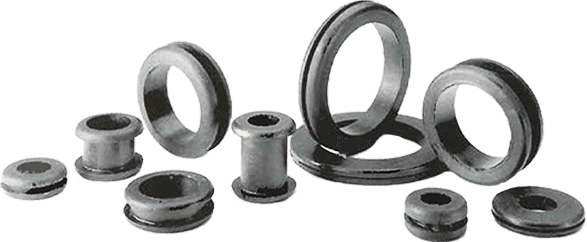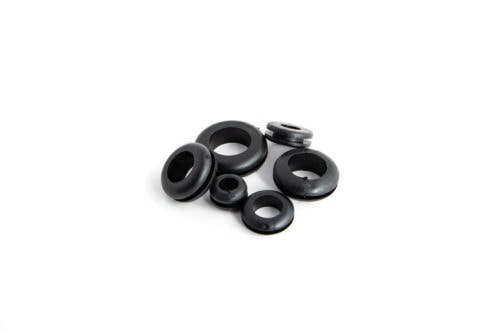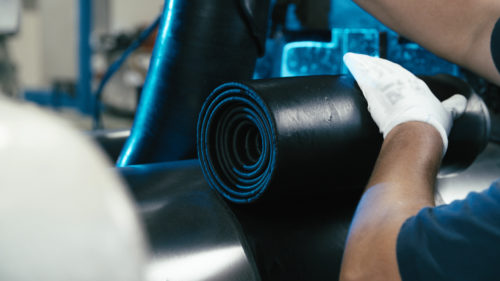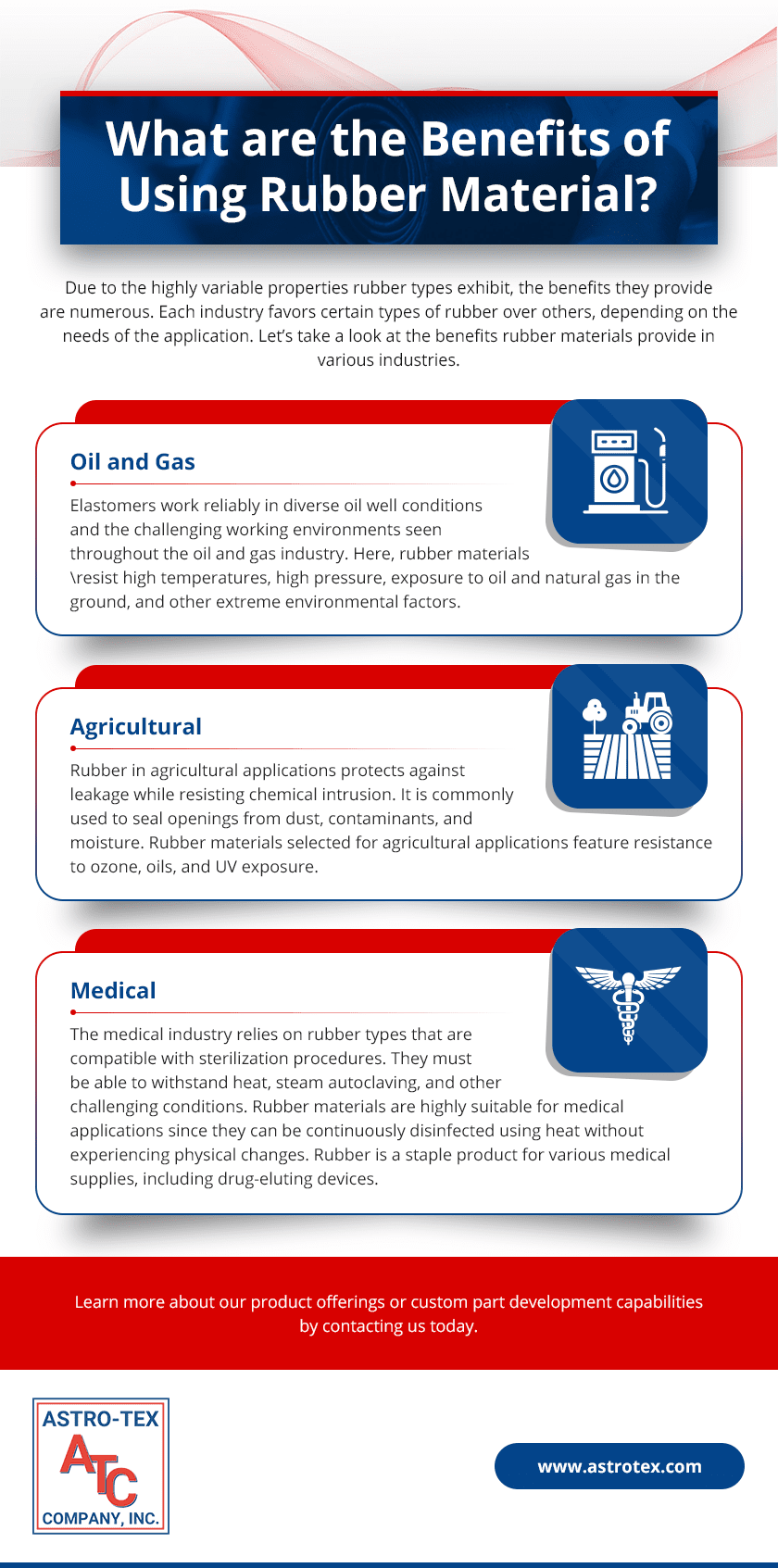What Are the Benefits and Applications of Rubber Grommets?
Leave a CommentRubber grommets are one of the most common types of grommets and are used across a wide range of industrial applications. Due to their many advantages, various industries use rubber grommets in all kinds of equipment, ranging from vehicles to consumer electronics and more. Here, we will discuss rubber grommets as well as their many benefits and applications.
What Is a Rubber Grommet?
Rubber grommets are used in various manufacturing and electrical engineering applications to cover sharp edges. Also known as insulating bushings, edging, bushings, or eyelets, rubber grommets are typically black in color and can be used for various purposes, including:
- Protecting wires. Rubber grommets are waterproof and dustproof, and they can protect wires from being easily cut by sharp plates and edges.
- Strain relief. Rubber grommets can provide strain relief by gripping wires in place and minimizing any damage or disruptions that happen if the cable or cord is accidentally pulled.
- Aesthetic purposes. Rubber grommets can enhance the appearance of a drilled or punched hole.
What Are the Benefits of Rubber Grommets?
Rubber grommets offer various benefits that make them an ideal solution for numerous applications. Not only do they protect wires and cables from sharp edges but also from the effects of vibration. Other benefits include:
- Various size options. Rubber grommets come in hundreds of stocked sizes to accommodate varied hole sizes and panel thicknesses.
- Water-resistant. Rubber grommets offer excellent water-resistant characteristics and are capable of withstanding organic acids and most modern chemicals.
- Durability and versatility. The durable and resistive properties of rubber grommets make them suitable for a range of industries that may come into contact with harsh conditions. They are built to be long-lasting and won’t come loose as easily as other grommet types.
- Material choices. Depending on the environment in which the rubber grommets will be used, they are available in several material options, including SBR, Buna-N, EPDM, silicone, Viton, and neoprene.
What Are the Common Applications of Rubber Grommets?
Rubber grommets offer an easy-to-install, durable, and highly resistant solution for protecting wires and other equipment parts. From vehicles and other heavy machinery to home appliances, computers, and more, rubber grommets are used across industries to provide the perfect sealing solution. Common applications for rubber grommets include:
- Automotive
- Computers
- Construction
- Control panels
- Electrical circuits
- Heavy machinery
- Home appliances
- Junction boxes
- Marine
- Medical
- Off-Road Equipment
- Panels and HVACs
- Tools
- Trailers
Rubber Grommets from Astro-Tex
Rubber grommets have uses across a wide spectrum of applications due to their ability to protect wires, prevent the intrusion of dust and water, and provide an aesthetically pleasing solution for covering sharp edges. At Astro-Tex, we offer a selection of rubber grommets in various sizes to fit your needs and save you time and money. We can help you determine the ideal material choice and can even provide a custom solution if you can’t find the part you’re looking for.
For more information about our rubber grommet capabilities, contact Astro-Tex today.
What Are the Benefits of Using Rubber?
Leave a CommentRubber is a versatile material used to manufacture an extensive assortment of goods. It is produced from both natural and synthetic sources and is available in several variations, each formulated to provide specific properties and benefits. This blog post will discuss some of the most widely-relied upon forms of rubber and the benefits associated with them.
What Are the Various Types of Rubber?
Whether produced using plant sources or developed synthetically using chemical processes, most rubber types share certain characteristics, such as elasticity, durability, and thermal contraction. However, rubber exists in several forms, each developed to feature unique characteristics to suit various application needs. The most commonly used types of rubber include:
- Neoprene. Also known as chloroprene, neoprene is an older type of synthetic rubber that features very high resistance to burning, degradation, and corrosion.
- Buna-N. Buna-N is an elastomer also referred to as nitrile rubber that is free from the allergenic proteins seen in latex-based rubbers. Buna-N delivers reliable structural integrity as well as resistance to compression set, heat, and wear.
- Fluoroelastomer. Fluorocarbon compounds are well suited to harsh and demanding environments as they resist temperature extremes and chemical exposure well.
- EPDM. Ethylene propylene diene monomer is a synthetic rubber compound that is highly durable to damage and temperature-related degradation. It also features excellent noise insulation properties.
- SBR. Styrene-butadiene rubber is a synthetic general-purpose elastomer featuring excellent hardness and durability. It outperforms many more costly synthetic rubbers in terms of water swell, abrasion resistance, and compression set.
What Are the Benefits of Using Rubber Material?
Due to the highly variable properties rubber types exhibit, the benefits they provide are numerous. Each industry favors certain types of rubber over others, depending on the needs of the application. Let’s take a look at the benefits rubber materials provide in various industries.
Oil and Gas
Elastomers work reliably in diverse oil well conditions and the challenging working environments seen throughout the oil and gas industry. Here, rubber materials resist high temperatures, high pressure, exposure to oil and natural gas in the ground, and other extreme environmental factors.
Agricultural
Rubber in agricultural applications protects against leakage while resisting chemical intrusion. It is commonly used to seal openings from dust, contaminants, and moisture. Rubber materials selected for agricultural applications feature resistance to ozone, oils, and UV exposure.
Medical
The medical industry relies on rubber types that are compatible with sterilization procedures. They must be able to withstand heat, steam autoclaving, and other challenging conditions. Rubber materials are highly suitable for medical applications since they can be continuously disinfected using heat without experiencing physical changes. Rubber is a staple product for various medical supplies, including drug-eluting devices.
Marine
The types of rubber used by the marine industry are highly resistant to strain and steam. They are also durable when used in environments that involve exposure to chemicals and oils. Rubber materials are highly adaptable for use with other metal bodies.
Off-Road
Rubber materials for off-road applications feature abrasion resistance, chemical and grease resistance, as well as an excellent ability to withstand petroleum and oil. They are sustainable in hot and cold temperatures and exhibit high tear strength as well as ozone resistance.
Choosing an Industry Leader with Astro-Tex
Astro-Tex is a proud supplier of industry-standard rubber products for the OEM market. Our full line of rubber solutions is easily engineered into existing products as well as new product developments. We specialize in supplying custom parts, in quantities ranging from prototype to large production run. Astro-Tex understands high-quality rubber solutions and delivers an extensive range of expertly crafted components that meet the needs of demanding industries. Learn more about our product offerings or custom part development capabilities by contacting us today.








